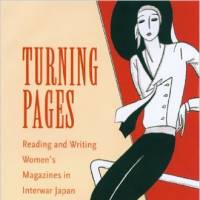The Taisho Era (1912-26) was a period of change and opportunity. It saw the birth of the so-called atarashii onna ("new woman") — the socially liberated, modern young woman, previously unseen in Japan. As this inquisitive individual moved into the job market, a number of magazines appeared that were published for and by her.
Turning Pages, by Sarah Frederick.
264 pages
UNIVERSITY OF HAWAII PRESS, Nonfiction.
Sarah Frederick's study of these magazines elucidates the realities and the ideological trends of the period. She argues that while some mainstream magazines tried to limit or smother the aspirations of the "new woman," others became hotbeds of radical debate. By examining the letters pages and articles, Frederick vividly brings to life the passion and engagement of Taisho Era women, particularly their thoughts on feminist or socialist theory.
She reappraises these magazines as key elements in the development of modern Japanese literature. Writers such as Junichiro Tanizaki were originally published in such journals and, Frederick persuasively argues, understanding them is essential to understanding the style and content of Japan's modernist novels and stories.
But perhaps the greatest gift the book offers to students of Japanese literature lies in the female authors she unearths, many of whom are overdue for rediscovery.
Our knowledge of the prewar age colors our view of the '20s, and we forget how vibrant and hopeful the era was. Taisho is the neglected period of modern Japanese history, and women are the neglected actors in that history. This book goes some way to highlight their contribution.



